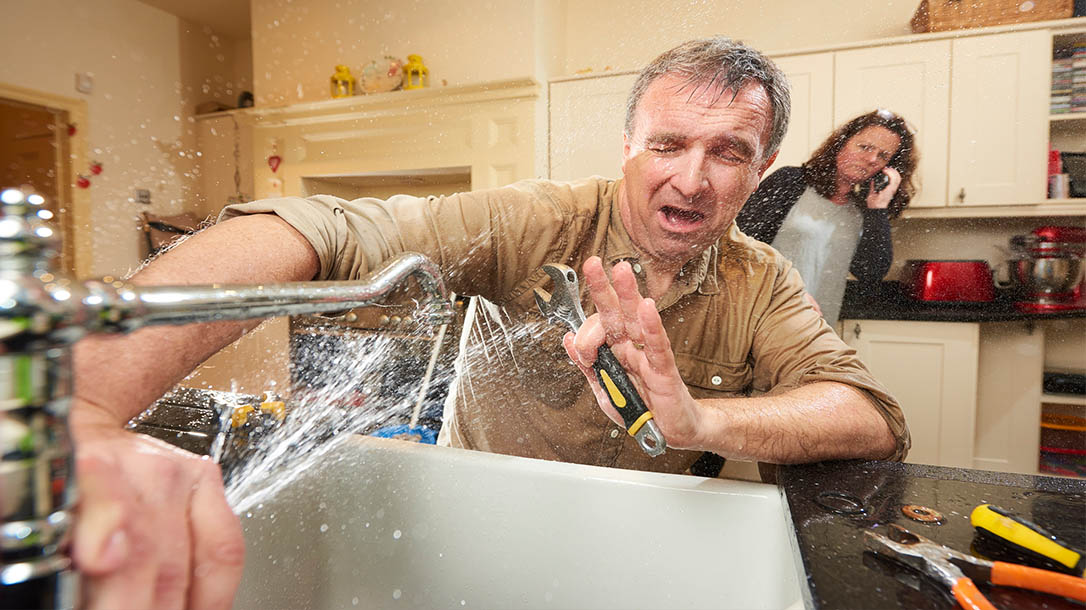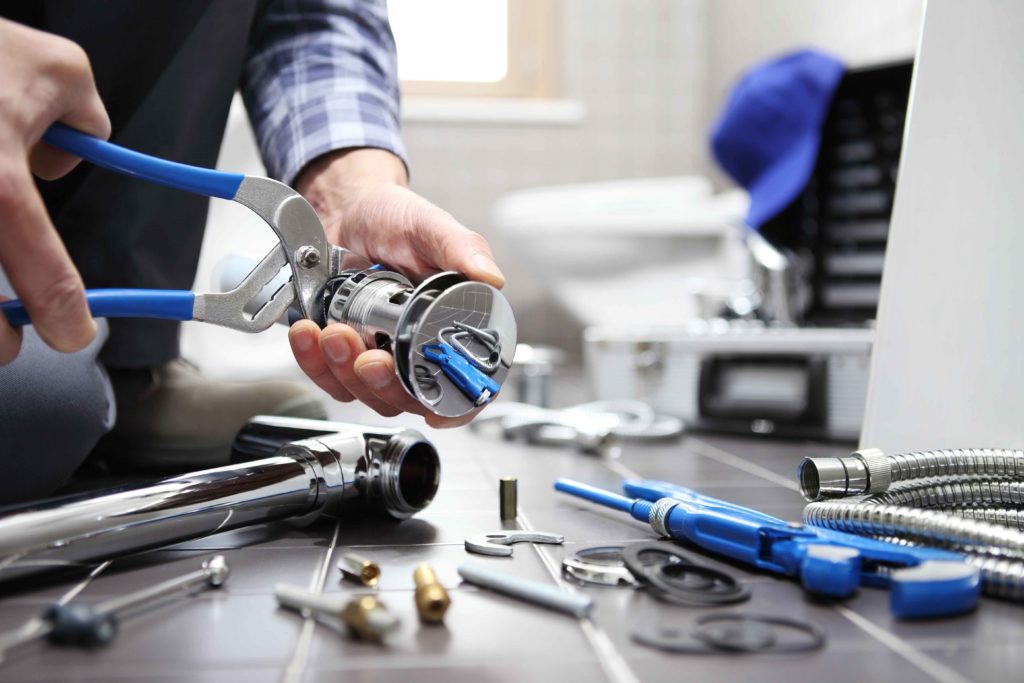Which It's Crucial to Fix a Broken Faucet
Which It's Crucial to Fix a Broken Faucet
Blog Article
Nearly everybody will have their own individual theory on the subject of Why Are My Faucets Dripping (And Can I Fix It Myself)?.

Dripping faucets might appear like a small hassle, however their influence surpasses simply the annoyance of the sound. From wasting water to incurring unneeded monetary prices and health and wellness threats, ignoring a dripping faucet can result in different repercussions. In this write-up, we'll explore why it's vital to resolve this usual house concern without delay and effectively.
Wastage of Water
Environmental Impact
Dripping taps add dramatically to water wastefulness. According to the Epa (EPA), a solitary faucet leaking at one drip per second can squander more than 3,000 gallons of water per year. This not just strains water sources but also impacts ecological communities and wild animals dependent on them.
Financial Expenses
Boosted Water Costs
Past the ecological influence, leaking faucets can pump up water bills substantially. The gathered wastefulness gradually equates into greater utility expenses, which can have been stayed clear of with prompt repair services.
Prospective Home Damage
Moreover, long term leaking can result in harm to fixtures and surface areas surrounding the faucet. Water buildup can trigger discoloration, rust, and even architectural issues if left neglected, resulting in added repair service expenses.
Health Worries
Mold and Mold Growth
The continuous presence of dampness from a dripping faucet creates an excellent atmosphere for mold and mildew and mildew development. These fungi not only endanger indoor air top quality but likewise posture health and wellness threats, especially for people with respiratory problems or allergic reactions.
Waterborne Diseases
Stationary water in dripping faucets can come to be a breeding ground for germs and various other microorganisms, raising the risk of waterborne illness. Pollutants such as Legionella bacteria grow in stationary water, possibly leading to severe health problems when ingested or breathed in.
Do it yourself vs. Professional Repair work
Pros and Cons of Do It Yourself Repair Work
While some may try to fix a leaking faucet themselves, DIY repair work come with their own collection of obstacles. Without proper knowledge and tools, DIY attempts can intensify the problem or cause insufficient fixings, prolonging the problem.
Benefits of Employing a Specialist Plumber
Working with a specialist plumber ensures that the underlying cause of the trickling tap is resolved effectively. Plumbing technicians have the experience and tools to detect and fix faucet issues efficiently, conserving time and lessening the risk of more damage.
Step-by-Step Guide to Fixing a Dripping Tap
Devices Required
Before trying to fix a trickling faucet, collect the essential tools, including an adjustable wrench, screwdrivers, replacement parts (such as washers or cartridges), and plumber's tape.
Common Tap Issues and Their Solutions
Determine the kind of faucet and the specific issue creating the drip. Usual troubles consist of worn-out washing machines, corroded shutoff seats, or defective O-rings. Refer to producer instructions or on the internet tutorials for detailed guidance on fixings.
Safety nets
Normal Maintenance Tips
To prevent trickling faucets, carry out routine upkeep such as cleaning up aerators, inspecting for leakages, and replacing damaged parts quickly. Furthermore, consider mounting water-saving gadgets or updating to a lot more efficient components.
Importance of Prompt Services
Attending to dripping taps as soon as they're discovered protects against additional water wastefulness and potential damages, eventually saving both water and money in the future.
Impact on Building Value
Assumption of Well-Maintained Home
Keeping a residential property in good condition, consisting of dealing with upkeep concerns like trickling faucets, improves its regarded value and value amongst possible buyers or renters.
Impact on Resale Worth
Properties with well-kept plumbing fixtures, consisting of taps, command greater resale worths in the real estate market. Dealing with leaking taps can add to a favorable impression during residential property assessments and arrangements.
Ecological Responsibility
Individual Contribution to Conservation
Taking obligation for taking care of leaking faucets lines up with wider initiatives toward water conservation and environmental sustainability. Every individual's actions collectively make a significant impact on preserving precious resources.
Sustainable Living Practices
By prioritizing prompt repair services and taking on water-saving routines, people add to sustainable living practices that benefit both present and future generations.
Conclusion
Resolving a trickling tap exceeds simple benefit; it's an essential step towards conserving water, lowering monetary costs, and guarding health and wellness and building. Whether with do it yourself repairs or specialist assistance, doing something about it to take care of trickling faucets is a little yet impactful method to promote responsible stewardship of sources and add to a healthier, more lasting future.
How to Fix a Dripping or Leaky Faucet
A leaking faucet is one of the most common problems that homeowners encounter, but it being commonplace doesn’t make it any less annoying. The constant drip drip drip of a leaking bathtub faucet, showerhead, or sink tap can disturb your home’s serenity. Left neglected, a dripping faucet can also result in higher water bills and discoloration or mold growth in your sink or plumbing fixtures.
Fortunately, you don’t have to be a trained plumber to know how to stop a dripping faucet. With some basic tools, replacement parts, and a little patience, leaky faucet repair is a breeze. In this article, we’ll explain what causes dripping faucets and how you can fix them.
What Causes a Leaking Faucet?
Kitchen and bathroom faucets come in all manner of designs, but most involve some combination of valves, O-rings, seals, and washers. The O-ring is usually the weakest link, but any one of these pieces can wear down over time. Heat, moisture, temperature fluctuations, minerals, mold, and movement can contribute to warping and corrosion, breaking the watertight seal. This just comes with the territory of being a homeowner. Everything is always subject to wear and tear, and some component parts of your appliances and fixtures need to be replaced on occasion. At least replacement O-rings are cheap!
More rarely, dripping faucets can be a symptom of excessively high water pressure. Were this the case in your home, you would probably notice that the leak is not isolated to one faucet. Water pressure issues are harder to resolve on your own. We recommend contacting a professional plumber if you suspect your water pressure is too high.
How to Fix a Dripping Faucet
Pipe wrench or monkey wrench Allen wrench set Screwdrivers Old towel or rag Shut off the water.
Before you do anything, you need to turn off the water to keep from drenching your kitchen or bathroom. You should find a valve under the sink and against the wall. Once you’ve turned this valve, try turning the faucet on to confirm that the water source has been cut off.
If you can’t locate your local valve for the faucet you’re working on, you can always shut off the water to the house at the main valve. Of course, this will prohibit anyone from using the sinks, showers, or toilets while you’re working on the faucet that’s giving you trouble.
Plug or block the drain.
You’ll be disassembling the faucet and removing some small bits of hardware. Plug the drain with a stopper or rag to avoid the possibility of a small screw falling into your P-trap.
Take apart the faucet assembly.
There are several varieties of kitchen and bathroom faucets, each with its own manner of assembly. For detailed instructions on how to disassemble your faucet, you can refer to the fixture’s manual or contact the manufacturer. If you know whether you have a ball, disc, cartridge, or compression faucet, you can find detailed schematics online.
In general, you need to begin by removing the faucet handles. You might notice a small screw that you’ll need to remove with a screwdriver or Allen wrench. If you don’t see any visible securing hardware, it’s likely hidden under a decorative cap that can be unscrewed or popped off with flathead screwdriver.
Remove each piece methodically, consulting a schematic when necessary. Take notes or arrange the pieces in such a way to make it easier to correctly reassemble the faucet later.
Remove the cartridge.
Once you’ve removed the handles and securing hardware, you should be able to remove the valve cartridge or stem. Some cartridges will slide right out. Other faucet models will require you to loosen a nut with a pipe wrench before you can remove the valve stem.
Examine the exposed hardware.
With the cartridge or stem removed, inspect the component parts. Check the rubber O-rings for wear and tear. Also examine the seat washer for corrosion or other damage. These pieces are usually the responsible parties for a dripping faucet, but it’s worth inspecting the other component parts while you have the faucet disassembled.
Find replacement parts.
Once you’ve identified which faucet component has failed, find an identical replacement. Your local hardware store should have O-rings, seat washers, and other standard components in stock. If you have a luxury or uncommon faucet, you may have to contact the manufacturer for a replacement part.
It’s a good idea to take your old parts with you to the hardware store so you can compare them with the store’s inventory and be sure you’re purchasing the correct replacement.
Reassemble the faucet.
With your new parts in hand, reconstruct the faucet and handles. Don’t be tempted to overtighten screws or nuts. You might think this could create a better seal, but it can instead damage or bend a delicate part of the assembly and create a new problem for you.
Turn on the water and test the faucet.
The only thing left to do is test your work. Unplug the sink, turn the water back on, and try the faucet. Congratulate yourself on a job well done!
https://www.libertyhomeguard.com/how-to-fix-a-dripping-or-leaky-faucet/

I ran across that content about Why It's Important to Fix Leaky Faucets while perusing the web. Sharing is nice. Helping people is fun. Thanks a bunch for being here. Don't hesitate to come by our site back soon.
Report this page